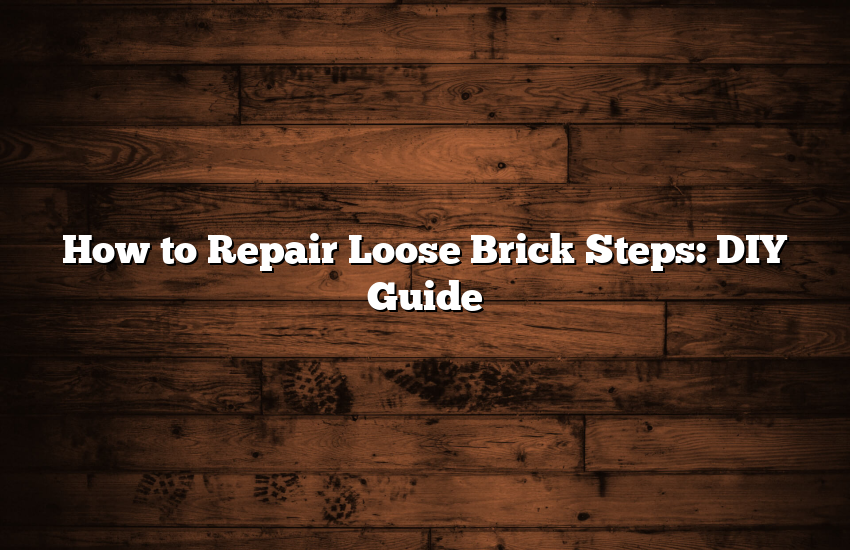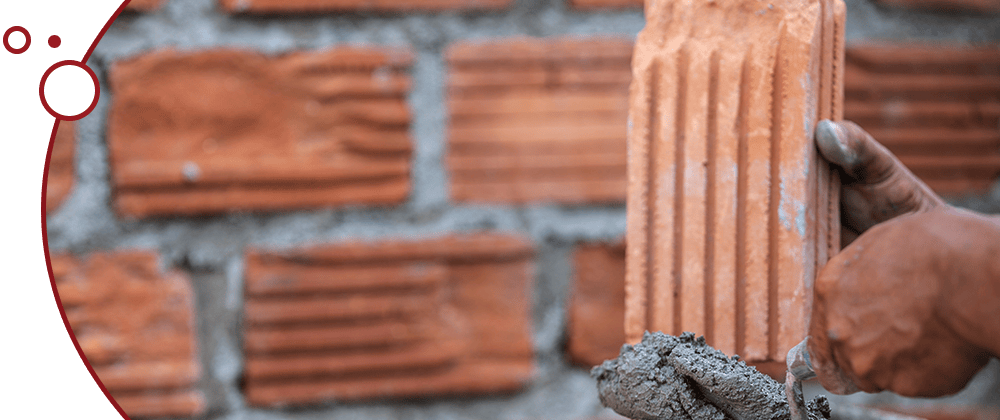
Discovering how to repair loose brick steps is a vital skill for maintaining the safety and aesthetics of your home. Over time, brick steps can deteriorate due to weather, wear and tear, or initial installation issues. This guide aims to empower homeowners with practical, step-by-step instructions on how to repair loose brick steps effectively. With a focus on easy-to-understand methods, this article will cover everything from assessing damage to the finishing touches, ensuring your steps are not only safe but also visually appealing. Embrace the art of DIY and transform your loose brick steps into a sturdy, welcoming entrance.
Table of Contents
How to Repair Loose Brick Steps: Understanding the Basics
This section focuses on the fundamental aspects of brick step repair. It delves into why brick steps can become loose over time, emphasizing factors such as weather exposure, improper installation, and natural deterioration. Understanding these root causes is crucial for both effective repair and preventative measures to ensure longevity and safety.
Brick Steps: Why They Get Loose
Brick steps are a common feature in many homes, providing a durable and attractive entryway. However, over time, these steps can become loose and unstable. The primary reasons for this include weather conditions, improper installation, and natural wear and tear.
- Weather Conditions: Exposure to rain, snow, and freeze-thaw cycles can significantly impact the integrity of brick steps. Water can seep into the mortar joints, freezing and expanding, which leads to cracking and loosening of the bricks.
- Improper Installation: If brick steps were not correctly installed, they are more likely to become loose over time. This could be due to inadequate foundation support, poor quality mortar mix, or insufficient curing time.
- Natural Wear and Tear: Regular use and the passage of time can lead to the gradual degradation of the mortar joints, causing the bricks to become loose.
Understanding these factors is crucial as it helps in taking preventative measures and carrying out effective repairs.
Preparing for Brick Step Repair: Tools and Assessment
Preparation is key to a successful repair job. This part of the article outlines the necessary tools and materials needed for repairing brick steps, such as bricks, mortar, a chisel, hammer, trowel, and safety equipment. It also highlights the importance of assessing the damage before starting the repair work, including identifying loose bricks, cracks, and the overall stability of the structure.
Gathering the Right Tools and Materials
To begin the repair process, it’s essential to have the right tools and materials at hand. This will ensure that the repair work goes smoothly and efficiently. You will need:
- Bricks: Either new bricks that match your existing steps or the original bricks if they are still in good condition.
- Mortar: A high-quality mortar mix suitable for outdoor use.
- Chisel and Hammer: For removing the loose bricks and old mortar.
- Trowel: For applying the new mortar.
- Pointing Tool: For finishing the mortar joints.
- Safety Equipment: Gloves, goggles, and a dust mask for protection.
Assessing the Damage
Before starting the repair, a thorough assessment of the brick steps is necessary. Look for loose or damaged bricks, cracks in the mortar, and any signs of uneven settling. This evaluation will help you understand the extent of the damage and the scope of the repair work needed.
Step-by-Step Guide: How to Repair Loose Brick Steps
This comprehensive section guides the reader through the actual repair process, step by step. It covers the removal of loose bricks, preparation of the base, mixing and applying the mortar, correctly placing new or cleaned bricks, and finishing touches like filling gaps and smoothing joints. It emphasizes the importance of each step to ensure a durable and aesthetically pleasing repair.
Removing Loose Bricks
The first step in the repair process is to remove the loose bricks. Use a chisel and hammer to gently pry them out. Be careful not to damage the bricks or the surrounding ones. If a brick is stubborn, avoid using excessive force, as this can cause more damage.
Preparing the Base
With the loose bricks removed, it’s time to prepare the base. Clear out all the old mortar and debris to ensure a clean and stable surface for the new installation. This step is crucial for the longevity of the repair.
Mixing and Applying Mortar
Follow the manufacturer’s instructions to mix the mortar to the right consistency. It should be firm enough to hold its shape but still workable. Apply an even layer of mortar on the base where the bricks will be placed. Ensure that the mortar is level and smooth.
Replacing Bricks
Carefully place the new or cleaned bricks onto the mortar. Press them down firmly and check that they are aligned with the existing steps. It’s important to make sure the bricks are level and evenly spaced.
Finishing Touches
Once all the bricks are in place, fill any gaps with additional mortar. Use a pointing tool to smooth and shape the mortar joints. This not only makes the steps look neat but also ensures a strong bond.
Curing Time
Allow adequate time for the mortar to cure. This is typically 24-48 hours but can vary depending on weather conditions. During this time, avoid using the steps to ensure the mortar sets properly.
Maintaining Your Brick Steps Post-Repair
Maintenance is vital for prolonging the life of brick steps. This section provides tips on regular inspections to catch early signs of wear or damage. It discusses the benefits of routine cleaning and the application of sealants to protect the steps from weather-related damage, thus preventing frequent repairs.
Regular Inspections
Regular inspections of your brick steps can prevent minor issues from becoming major problems. Look for signs of loose bricks, cracks in the mortar, or other damage. Addressing these early can extend the life of your steps.
Cleaning and Sealing
Keeping your brick steps clean helps maintain their appearance and integrity. Consider sealing the bricks and mortar with a suitable sealant. This provides an extra layer of protection against weather elements and wear.
Common Mistakes to Avoid When Repairing Brick Steps
Finally, this section addresses common pitfalls in the repair process. It advises against rushing the job, which can lead to poor-quality repairs, and highlights the importance of considering weather conditions during the repair, as they can significantly affect the curing of mortar and the overall success of the repair.
Rushing the Process
Quality repairs take time. Rushing through the steps can lead to subpar results and may necessitate further repairs down the line. Take your time to ensure each step is executed correctly.
Ignoring Weather Conditions
Weather plays a significant role in the repair process, particularly when it comes to the curing of the mortar. Avoid doing repairs in extreme weather conditions such as heavy rain, intense heat, or freezing temperatures.
Conclusion
In conclusion, mastering how to repair loose brick steps is an invaluable skill for any homeowner. Through this guide, we’ve explored the essential steps from preparation to completion, ensuring a thorough and effective repair process. Regular maintenance, coupled with the knowledge of common pitfalls to avoid, will ensure your brick steps remain in top condition. Remember, repairing loose brick steps not only enhances your home’s safety but also contributes to its curb appeal. Empower yourself with these DIY skills and confidently maintain the integrity and beauty of your brick steps for years to come.
FAQs
Q: What are the first steps in learning how to repair loose brick steps?
A; Begin by assessing the damage to understand the extent of repair needed. Gather necessary tools like mortar, chisel, and bricks, and plan your approach based on the damage severity.
Q: How often should I inspect my brick steps to avoid major repairs?
A: Inspect your brick steps bi-annually, especially after extreme weather conditions, to identify any loose bricks or mortar deterioration early on.
Q: What’s the best weather condition for repairing loose brick steps?
A: Ideal conditions are dry and mild weather. Extreme temperatures can affect mortar setting, so avoid very hot or freezing conditions for effective repairs.
Q: Can I reuse old bricks when repairing loose brick steps?
A: Yes, if the old bricks are still in good condition, they can be cleaned and reused, ensuring they match and align well with existing steps.
Q: How long does it take to repair loose brick steps effectively?
A: The repair time varies based on the extent of damage. Generally, it can take a few hours to a day for the repair, followed by 24-48 hours for the mortar to properly set.


